I’m willing to wager that many of you have had pineapple make its way into your kitchen at one point or another. It’s a tropical superstar that’s known for its vibrant and refreshing flavor, a perfect addition to a wide range of dishes.
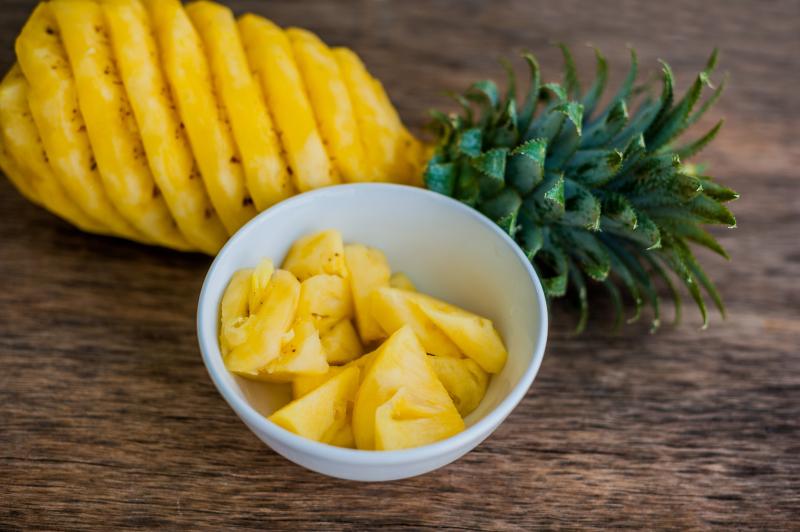
But have you ever wondered about the unique interplay between tanginess and sweetness in pineapple’s flavor?
As someone who’s spent years exploring the world of food, I’ve often found myself captivated by the enigmatic acidity of this tropical gem.
Highlights
- Pineapples’ acidity level is between 3.2 and 4.0, which makes them less sharp than lemons but still zesty. As they ripen, they become sweeter because the acid turns into sugar.
- The MD-2 or Golden Pineapple is the most common variety found in U.S. supermarkets, while the Kona Sugarloaf from Hawaii is celebrated for its unique sweetness and lower acidity.
- Pineapples are packed with health benefits, including vitamins, antioxidants, and the enzyme bromelain, which aids digestion. However, people with acid reflux or GERD should consume them with caution due to their natural acidity.
In this article:
- What is the Acidity Level of Pineapple?
- Less Acidic Pineapple Varieties you Might Find in U.S. Supermarkets
- How Does the Level of Acidity Change In Pineapples?
- Are Canned Pineapples Less Acidic?
- Are Frozen Pineapples less Acidic?
- But Why Does Pineapple Sting?
- Health Benefits of Eating Pineapples
- Potential Adverse Effects for Acid Reflux and GERD Patients
- Safe Pineapple Consumption for GERD and Acid Reflux
What is the Acidity Level of Pineapple?
Pineapples boast an acidity level that ranges from a pH of 3.2 to 4.0, situating them on the tangy side of the fruit spectrum, yet they don’t reach the sharpness of some citrus fruits [1].
This level of acidity is primarily due to citric and malic acids, which are responsible for the fruit’s lively zest and refreshing taste. Foods with a pH less than 7 are considered acidic.
When compared to other fruits, pineapples strike a unique balance. Lemons and oranges, for example, have a lower pH, typically between 2.0 and 3.0, making them more acidic and thus sharper in taste.
On the other hand, strawberries, with a pH range of 2.3 to 3.5, are closer to pineapples in terms of acidity but often taste sweeter due to their higher sugar content.
Less Acidic Pineapple Varieties you Might Find in U.S. Supermarkets
1. MD-2 Pineapple or Golden Pineapple

This variety is predominantly grown in Costa Rica. It’s the most common type found in U.S. supermarkets due to its widespread cultivation in Central America.
2. Honey Cream Pineapple
As a newer variety, its specific country of origin can vary, but it may be sourced from countries with advanced pineapple cultivation techniques, including parts of Central and South America, and potentially the Philippines or Thailand, depending on the brand and availability.
3. Sugarloaf Pineapple
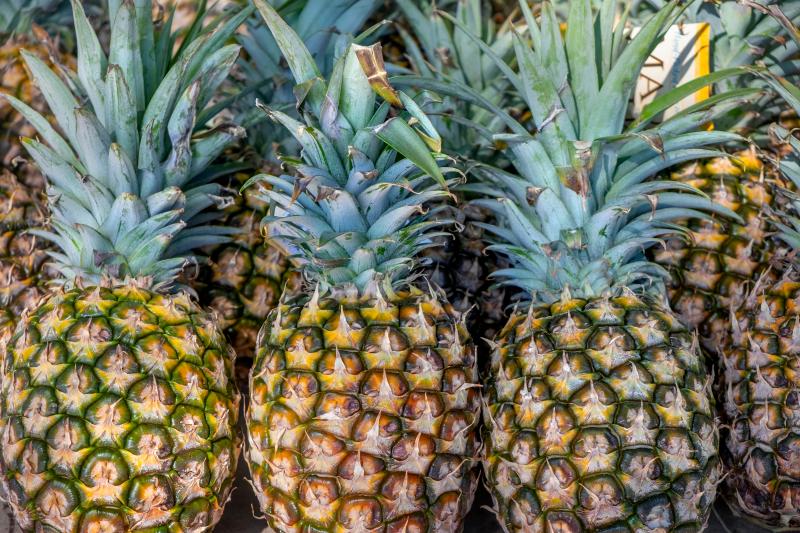
The Sugarloaf variety is grown in various countries, including Mexico, Brazil, and some Caribbean islands. Its availability in the U.S. might depend on import regulations and seasons.
4. Kona Sugarloaf Pineapple

This specific variety hails from Hawaii, USA. The Kona region is well-known for its rich volcanic soil, which contributes to the unique sweetness and low acidity of this pineapple variety.
How Does the Level of Acidity Change In Pineapples?
As pineapples ripen, the sugar/acid ratio shifts — acid levels decrease while sugars increase, leading to a sweeter taste.
Unripe vs Ripe
Unripe pineapples are easily recognized by their green exterior and firm texture. They possess a higher acidity level, which imparts a sharp, tangy taste that can sometimes be too intense for the palate.
This acidity is primarily due to the presence of organic acids like citric and malic acid, which dominate the fruit’s flavor profile at this stage.
As pineapples ripen, their color shifts to a vibrant yellow, signaling not just a change in appearance but also in taste and texture.
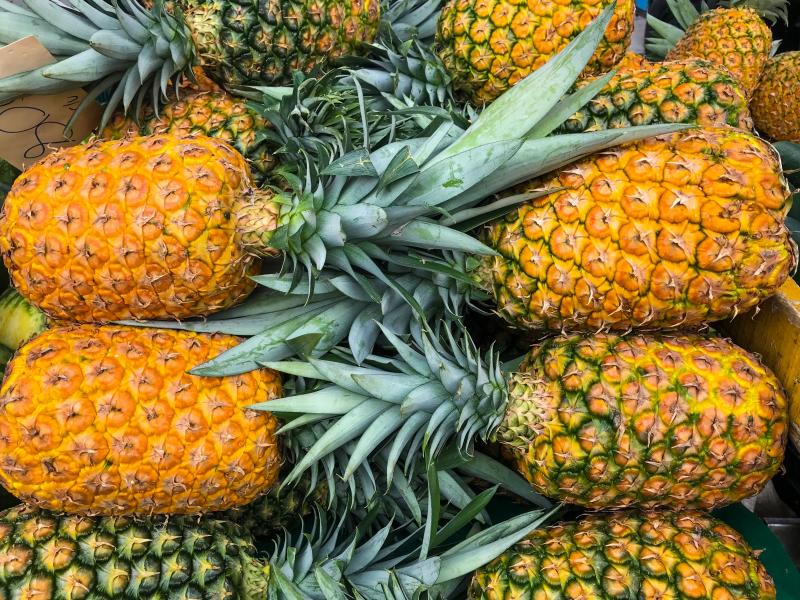
The fruit becomes softer, juicier, and significantly sweeter. This sweetness is a result of the acids converting into sugars, a natural process that lowers the pineapple’s overall acidity.
Are Canned Pineapples Less Acidic?
Yes, canned pineapples are still acidic, even though they may taste sweeter due to the syrup.
The syrup or juice added during the canning process increases the sugar content, which can mask the acidity, making the pineapple taste sweeter.
However, the inherent acidity from citric and malic acids remains present, ensuring that canned pineapples retain their characteristic tang alongside the added sweetness.
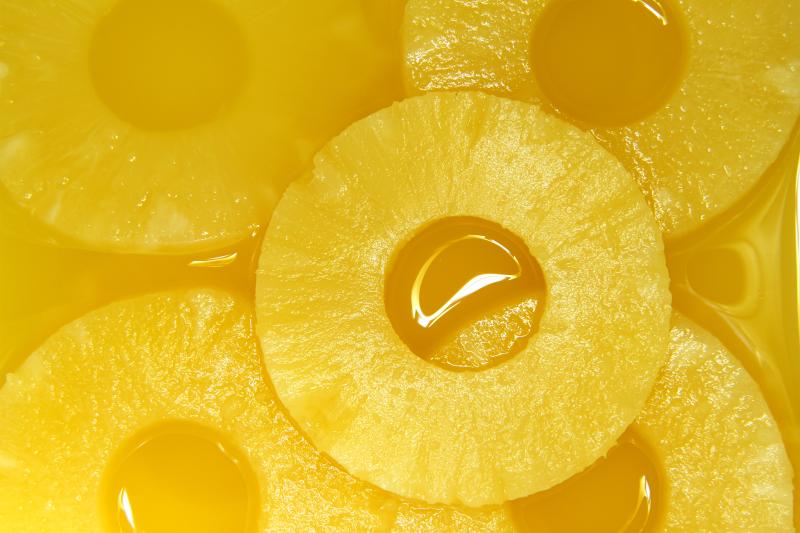
Are Frozen Pineapples less Acidic?
Frozen pineapples maintain their acidity levels similar to their fresh counterparts.
The freezing process helps preserve the fruit’s natural characteristics, including its acidity. While freezing may slightly alter the texture of the pineapple, it doesn’t significantly affect its pH or acidity.
So, whether you’re enjoying fresh, canned, or frozen pineapple, you can expect a similar level of tanginess in each.
But Why Does Pineapple Sting?
The tingling you feel when eating pineapple isn’t because it’s acidic.
It’s caused by bromelain, a special enzyme found only in pineapple. This enzyme breaks down proteins, which is why pineapple can tenderize meat and enhance its flavor. I’ve used pineapple juice to marinate beef, resulting in exceptionally tender texture.
However, when you eat pineapple, bromelain acts on the proteins in your mouth’s soft tissues, causing a temporary stinging sensation.
How Bromelain Aids Digestion
A study featured in the “Nature Journal” reveals that bromelain, an enzyme found in pineapple, aids in digestion.
It assists by breaking down proteins and reducing inflammation in the gut, offering potential benefits for individuals with digestive conditions.
However, as with any dietary supplement or natural remedy, its effectiveness can vary from person to person. Some individuals might experience significant benefits, while others may notice minimal effects.
Thus it’s essential to consider personal health conditions and consult with a healthcare professional.
Here how it might help:
- Protein Digestion: Helps break down proteins into their smaller components, such as peptides and amino acids. This can facilitate more efficient digestion and absorption of proteins in the gut.
- Enhanced Absorption: By breaking down proteins more effectively, it can help enhance the overall absorption of nutrients from the digestive tract into the bloodstream.
- Reduced Inflammation: Bromelain has been shown to have anti-inflammatory properties. While inflammation is not always directly related to digestion, reducing inflammation in the gut can support healthier digestion and potentially alleviate symptoms of certain digestive disorders.
Health Benefits of Eating Pineapples
Incorporating pineapples into your diet is not just a treat for your taste buds but also a boon for your health.
Whether it’s through smoothies, salads, or just enjoying them as a fresh snack, the benefits of eating pineapples are too good to ignore.
Here’s why incorporating pineapples into your meals can be a game-changer for your health:
- Vitamins and Minerals: Loaded with vitamins C and B, and manganese, pineapples boost immunity, support bone health, and enhance iron absorption.
- Antioxidants: Their antioxidants combat oxidative stress, reducing the risk of inflammation and diseases.
- Digestive Aid: Bromelain, a unique enzyme in pineapples, helps break down proteins, aiding digestion and benefiting those with pancreatic insufficiency.
- Anti-inflammatory: Bromelain also has anti-inflammatory properties, aiding recovery from surgeries and exercise.
- Weight Management: Low in calories and high in fiber, pineapples help you feel full, supporting weight loss efforts.
- Heart Health: The fruit’s nutrients contribute to heart health by lowering blood pressure and preventing arterial plaque.
- Immune Support: High levels of vitamin C in pineapples strengthen the immune system.
- Eye Health: Containing beta-carotene and vitamin C, pineapples can help reduce the risk of age-related eye conditions.
Potential Adverse Effects for Acid Reflux and GERD Patients
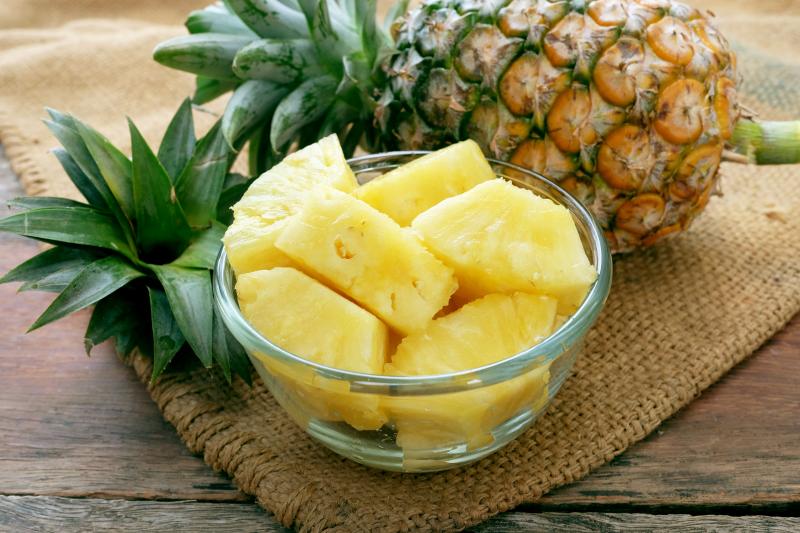
For individuals dealing with acid reflux or GERD (Gastroesophageal Reflux Disease), the acidity in pineapples can sometimes be a double-edged sword.
While the fruit’s vibrant flavor and nutritional benefits are undeniable, its natural acidity may exacerbate symptoms for those sensitive to acidic foods.
This is because the citric and malic acids in pineapples can trigger or worsen the uncomfortable sensations associated with these conditions, such as heartburn or indigestion.
Consuming pineapples might lead to potential discomfort for those with acid reflux or GERD, manifesting as an increased frequency or severity of symptoms.
It’s a delicate balance to maintain, as the very qualities that make pineapples appealing can also pose challenges for digestive health in susceptible individuals.
Safe Pineapple Consumption for GERD and Acid Reflux
Monitor Tolerance: Start with a small amount of pineapple to assess individual tolerance.
Consume with Meals: Eating pineapple as part of a meal may help minimize potential irritation due to buffering effect of other foods.
Choose Ripe Pineapple: Ripe pineapple tends to be less acidic and sweeter, potentially making it more tolerable.
Canned Pineapple Option: Opt for canned pineapple in its own juice (not syrup) for consistent ripeness and texture, but be aware of its similar acidity level to fresh pineapple.
Moderation is Key: Individuals with GERD or sensitive stomachs should consume pineapple in moderation, if at all, based on their tolerance.
Consult Healthcare Professionals: Seeking advice from a healthcare provider or dietitian can provide personalized dietary recommendations.
How to Choose a Ripe Pineapple
Individuals with GERD and acid reflux should opt for ripe pineapple if they wish to include it in their diet, as its lower acidity may be more tolerable.
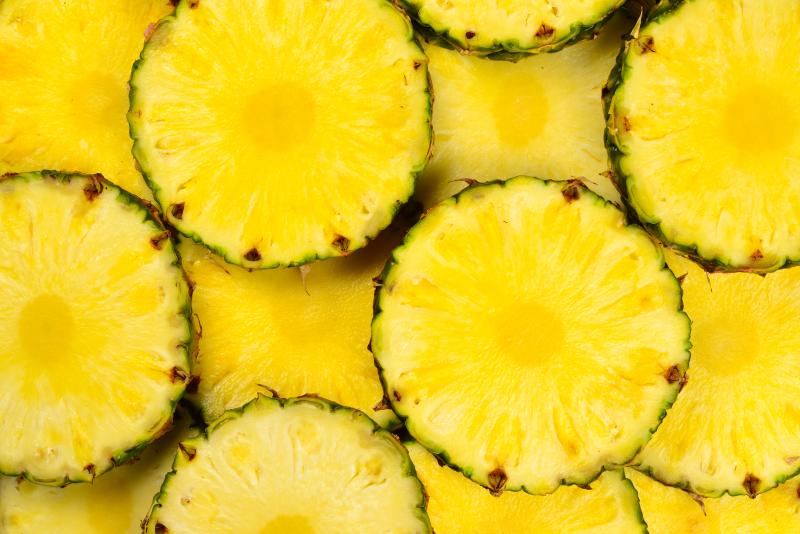
1. First off, give it a good look. You’re aiming for a pineapple with a golden-yellow hue.
2. But don’t just stop at the color—give it a gentle squeeze. It should feel firm, yet slightly give under pressure, like a ripe avocado.
3. Now, onto the sniff test: take a whiff at the bottom. A sweet, fragrant aroma? That’s the jackpot, signaling it’s ripe and ready to eat.
4. The leaves on top should look green and fresh, not dry or brown.
Remember, a ripe pineapple won’t suddenly get sweeter once you take it home, so use these tips to pick a winner right off the bat.
5. When you slice into your pineapple, you’re looking for a bright yellow color. A uniform yellow hue from the outer edge to the core means you’ve hit the sweet spot—literally. If it’s still a bit pale or green near the core, it might not have reached its full potential in flavor.
Closing thoughts
In conclusion, pineapples are nutritionally powerful, offering an array of vitamins, antioxidants, and digestive benefits.
However, their natural acidity can be a source of discomfort for individuals sensitive to acidic foods, especially those with acid reflux or GERD.
While the acidity level of pineapples falls within a tangy range, mindful consumption and strategic food pairings can help mitigate potential digestive issues.
Alternatives such as combining pineapple with dairy products or opting for ripe pineapples with lower acidity levels can make enjoying this tropical fruit more comfortable.
From supporting immunity to aiding digestion and promoting heart health, pineapples continue to be a delightful addition to a balanced diet. It’s all about finding the right balance to savor the nutritional goodness while minimizing any digestive discomfort.